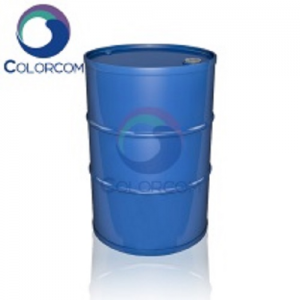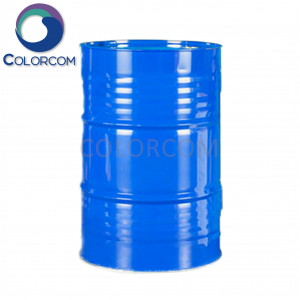2-Butanone | 78-93-3
Product Physical Data:
| Product Name |
2-Butanone |
| Properties |
Colorless liquid with acetone-like odor |
| Melting Point(°C) |
-85.9 |
| Boiling Point(°C) |
79.6 |
| Relative density (Water=1) |
0.81 |
| Relative vapour density (air=1) |
2.42 |
| Saturated vapour pressure (kPa) |
10.5 |
| Heat of combustion (kJ/mol) |
-2261.7 |
| Critical temperature (°C) |
262.5 |
| Critical pressure (MPa) |
4.15 |
| Octanol/water partition coefficient |
0.29 |
| Flash point (°C) |
-9 |
| Ignition temperature (°C) |
404 |
| Upper explosion limit (%) |
11.5 |
| Lower explosion limit (%) |
1.8 |
| Solubility | Soluble in water, ethanol, ether, acetone, benzene, miscible in oils. |
Product Properties:
1.Chemical Properties: Butanone is susceptible to a variety of reactions due to its carbonyl group and the active hydrogen adjacent to the carbonyl group. Condensation occurs when heated with hydrochloric acid or sodium hydroxide to form 3,4-dimethyl-3-hexen-2-one or 3-methyl-3-hepten-5-one. When exposed to sunlight for a long time, ethane, acetic acid and condensation products are formed. When oxidised with nitric acid, biacetyl is formed. When oxidised with chromic acid and other strong oxidants, acetic acid is generated. Butanone is relatively stable to heat, above 500 °C thermal cracking to generate alkenone or methyl alkenone. When condensed with aliphatic or aromatic aldehydes, it generates high molecular weight ketones, cyclic compounds, ketones and resins, etc. For example, when condensed with formaldehyde in the presence of sodium hydroxide, it generates bi-acetyl. For example, condensation with formaldehyde in the presence of sodium hydroxide first produces 2-methyl-1-butanol-3-one and then dehydrates to produce methylisopropenyl ketone. This compound undergoes resination when exposed to sunlight or ultraviolet light. Condensation with phenol produces 2,2-bis(4-hydroxyphenyl)butane. Reacts with aliphatic esters in the presence of a basic catalyst to form β-diketones. Acylation with anhydride in the presence of an acidic catalyst to form β-diketone. Reaction with hydrogen cyanide to form cyanohydrin. Reacts with ammonia to form ketopiperidine derivatives. The α-hydrogen atom of butanone is readily substituted with halogens to form various halogenated ketones, e.g., 3-chloro-2-butanone with chlorine. Interaction with 2,4-dinitrophenylhydrazine produces yellow 2,4-dinitrophenylhydrazone (m.p. 115°C).
2.Stability: Stable
3.Prohibited substances: Strong oxidants, strong reducing agents, bases
4.Polymerisation hazard: Non-polymerisation
Product Application:
1.Butanone is mainly used as a solvent, such as for lubricating oil dewaxing, paint industry and a variety of resin solvents, vegetable oil extraction process and refining process of azeotropic distillation.
2.Butanone is also the preparation of pharmaceuticals, dyes, detergents, spices, antioxidants and some catalysts are intermediates, synthetic anti-desiccant agent methyl ethyl ketone oxime, polymerisation catalyst methyl ethyl ketone peroxide, etching inhibitor methyl pentynol, etc., in the electronics industry as a photolithography of integrated circuits after the developer.
3.Used as detergent, lubricant dewaxing agent, vulcanisation accelerator and reaction intermediates.
4.Used in organic synthesis. Used as chromatographic analysis standard substance and solvent.
5.Used in electronic industry, commonly used as cleaning and degreasing agent.
6.In addition to being widely used in oil refining, coatings, auxiliaries, adhesives, dyes, pharmaceuticals and electronic components cleaning, etc., it is mainly used as a solvent for nitrocellulose, vinyl resin, acrylic resin and other synthetic resins. Its advantages are strong solubility and lower volatility than acetone. In the extraction of vegetable oils, refining process of azeotropic distillation and the preparation of spices, antioxidants and other applications.
7.It is also a raw material for organic synthesis and can be used as a solvent. In the oil refining industry for lubricating oil dewaxing agent, while used in medicine, paint, dyes, detergents, spices and electronics and other industries. Solvent for liquid ink. Used in cosmetics for the manufacture of nail polish, as a low-boiling point solvent, can reduce the viscosity of nail polish, fast-drying.
8.Used as solvent, dewaxing agent, also used in organic synthesis, and as raw materials for synthetic spices and pharmaceuticals.
Product Storage Notes:
1.Store in a cool, ventilated warehouse.
2.Keep away from fire and heat source.
3.The storage temperature should not exceed 37°C.
4.Keep the container sealed.
5.It should be stored separately from oxidising agents, reducing agents and alkalis, and should never be mixed.
6.Use explosion-proof lighting and ventilation facilities.
7.Prohibit the use of mechanical equipment and tools that are easy to generate sparks.
8.The storage area should be equipped with leakage emergency treatment equipment and suitable shelter materials.









